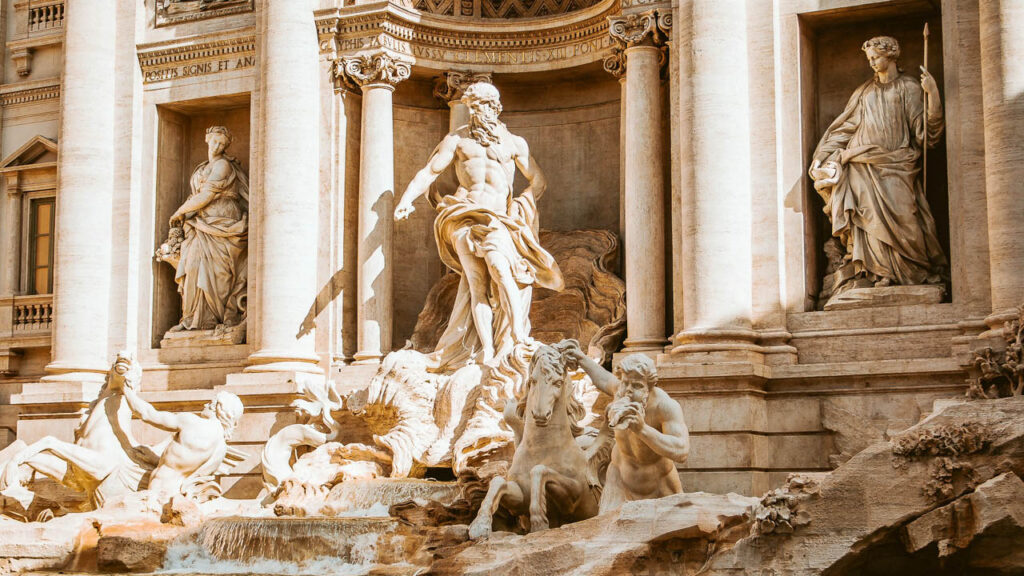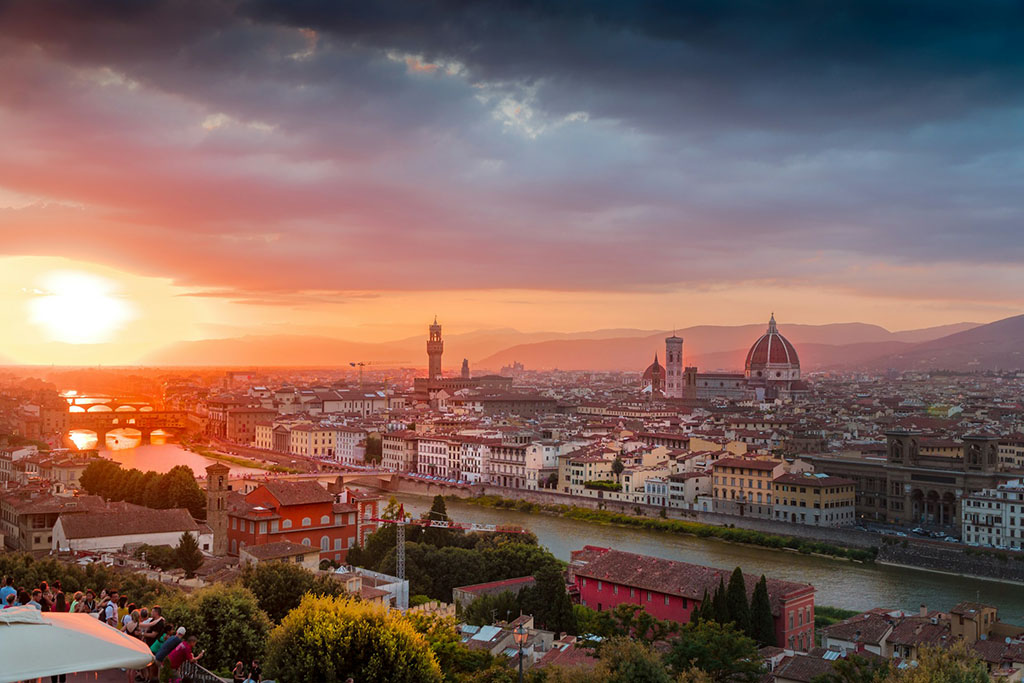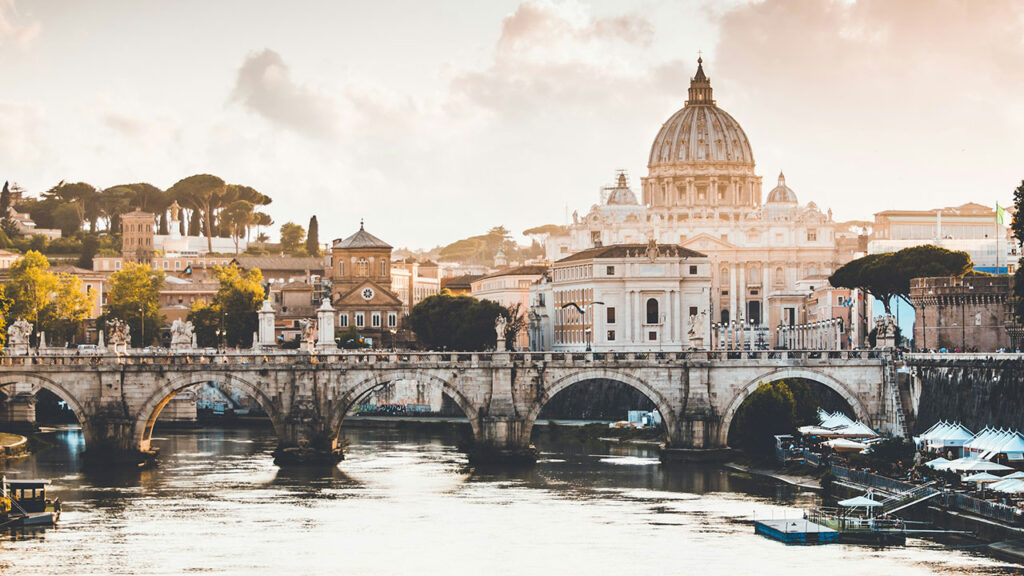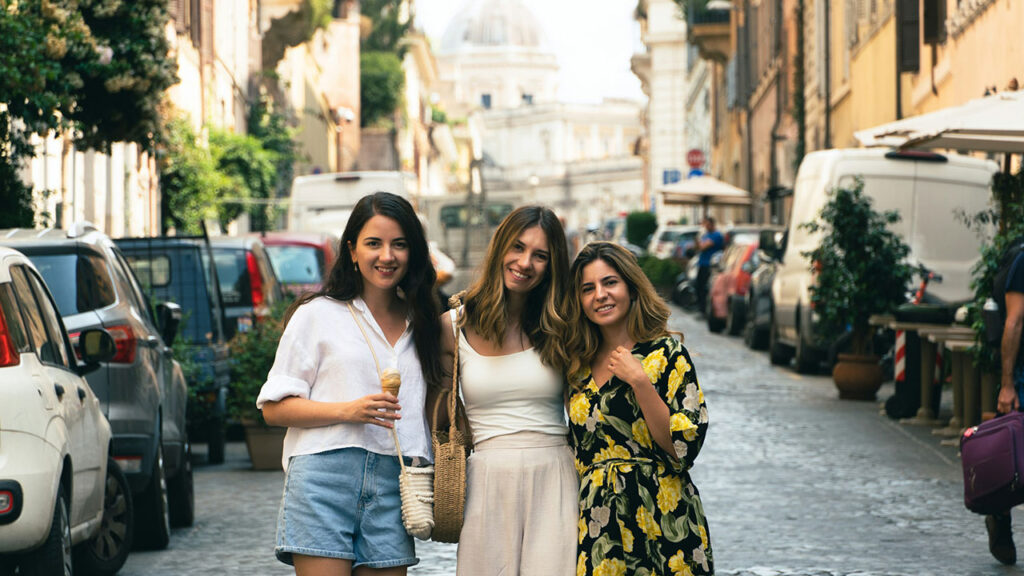Italy is one of the most captivating countries in the world, a place where history, art, culture, and gastronomy come together in perfect harmony. From the rolling hills of Tuscany to the rugged cliffs of the Amalfi Coast, Italy is a treasure trove of experiences waiting to be uncovered. Whether you’re a first-time visitor or returning for another dose of La Dolce Vita, this guide is designed to help you make the most of your Italian adventure in 2024.
1. Why Visit Italy?
A Living History Book
Italy’s long and storied history stretches back over thousands of years, from the Roman Empire to the Renaissance and beyond. Everywhere you go, you’ll find echoes of the past. Cities like Rome, Florence, and Venice are open-air museums, where iconic landmarks, ancient ruins, and Renaissance masterpieces are part of the everyday landscape.
Unrivaled Art and Architecture
Italy is home to some of the most famous works of art in the world. The Sistine Chapel, Michelangelo’s David, Botticelli’s The Birth of Venus, and the Leaning Tower of Pisa are just a few of the country’s treasures. Walk the streets and you’ll discover countless churches, palazzos, and fountains, each with its own artistic flair.
A Culinary Paradise
Italy is synonymous with incredible food. Each region has its own distinct culinary traditions, from the pizzas of Naples to the truffles of Piedmont, the seafood of Sicily, and the pasta dishes of Bologna. Italians take pride in their food, and you can expect to enjoy some of the best meals of your life during your visit.
Natural Beauty
Beyond its historical cities, Italy offers diverse landscapes ranging from the snow-capped peaks of the Alps to the sun-drenched beaches of Sardinia. Whether you’re hiking the Cinque Terre, exploring the lakes of northern Italy, or relaxing on the Amalfi Coast, Italy’s natural beauty is as varied as it is stunning.
2. Best Times to Visit Italy
Italy’s beauty can be enjoyed year-round, but different seasons offer unique experiences.
Spring (March to May)
Spring is one of the best times to visit Italy. The weather is mild, flowers are in bloom, and the tourist crowds are smaller than in the peak summer months. This is the perfect time to explore Italy’s famous gardens and countryside, like Tuscany or the Lakes region.
Summer (June to August)
Summer is the high season for tourism, especially in popular destinations like Rome, Florence, Venice, and the Amalfi Coast. Expect warm weather (sometimes hot in the south), longer days, and bustling cities. However, many locals take their vacations in August, so smaller towns and businesses may be closed.
Autumn (September to November)
Autumn is harvest season, which means festivals celebrating wine, truffles, and chestnuts. The weather is still pleasant, making it a great time to visit, especially for those looking to experience Italy’s culinary delights. September and October are particularly great months to travel if you want to avoid summer crowds.
Winter (December to February)
Winter in Italy brings a quiet charm. While northern cities like Milan or Turin may see some snow, cities in the south and along the coasts remain mild. This is a great time to explore Italy’s cultural treasures without the crowds. If you love winter sports, Italy’s Alpine regions offer excellent skiing opportunities.
3. Top Destinations to Explore in Italy
Italy’s diverse regions each offer something unique. Here are the must-see places you should consider:
Rome: The Eternal City

Rome is the heart of Italy, where ancient history meets vibrant modern life. Highlights include the Colosseum, Roman Forum, Pantheon, and of course, Vatican City with St. Peter’s Basilica and the Sistine Chapel. Wander through cobbled streets, sip espresso in a sun-dappled piazza, and enjoy authentic Roman pasta dishes like cacio e pepe or carbonara.
Florence: The Birthplace of the Renaissance

Florence is an art lover’s dream. Home to some of the world’s greatest artistic masterpieces, it’s a city that played a pivotal role in shaping the Renaissance. Visit the Uffizi Gallery, admire Michelangelo’s David, and explore the majestic Florence Cathedral (Duomo) with its stunning red-tiled dome. For a panoramic view of the city, head up to Piazzale Michelangelo.
Venice: The Floating City
Venice, with its intricate network of canals and bridges, is one of the most enchanting places in Italy. Visit St. Mark’s Basilica, take a gondola ride along the Grand Canal, and explore the lesser-known neighborhoods like Cannaregio. Don’t miss a visit to the colorful island of Burano and the glass-making island of Murano.
Amalfi Coast: A Coastal Paradise
The Amalfi Coast is known for its dramatic cliffs, colorful seaside villages, and crystal-clear waters. Towns like Positano, Amalfi, and Ravello are picturesque, offering a combination of luxurious beach relaxation and adventure. If you love hiking, try the Path of the Gods, which offers breathtaking views of the coastline.
Tuscany: Rolling Hills and Timeless Villages
Tuscany is the quintessential Italian countryside. Known for its rolling hills, vineyards, and medieval villages, it’s the perfect destination for wine lovers and those seeking a slower pace of life. Visit Siena, San Gimignano, and the stunning Val d’Orcia region. Don’t forget to sample the local wines, particularly Chianti and Brunello di Montalcino.
Milan: Italy’s Fashion Capital
Milan is a cosmopolitan city known for its fashion and design. But beyond the stylish boutiques, you’ll find historical landmarks like Milan Cathedral (Duomo), the Teatro alla Scala, and Leonardo da Vinci’s The Last Supper. Milan is also a gateway to the beautiful Lakes Region, with Lake Como and Lake Maggiore just a short drive away.
Sicily: A Blend of Cultures
Sicily is a melting pot of cultures, thanks to its long history of conquest and settlement by the Greeks, Romans, Arabs, Normans, and more. Explore Palermo for its stunning Norman architecture, visit the ancient Greek temples of Agrigento, or hike up Mount Etna, Europe’s largest active volcano.
4. Italian Culture and Customs
La Dolce Vita: The Sweet Life
Italians are known for their love of life, and La Dolce Vita is more than just a phrase—it’s a lifestyle. Italians value family, good food, and taking time to enjoy life’s simple pleasures. Meals are long, social affairs, and there’s always time for a coffee or aperitivo with friends.
Language Tips
While many Italians in tourist areas speak English, learning a few basic Italian phrases will go a long way in enhancing your experience. Simple greetings like “Buongiorno” (Good morning) and “Grazie” (Thank you) are always appreciated. Italians are warm and welcoming, and a little effort in their language will be met with smiles.
Dress Code
Italians are known for their impeccable sense of style. When visiting churches or religious sites, be respectful and dress modestly (shoulders and knees should be covered). Even in everyday life, Italians tend to dress well, so it’s a good idea to pack stylish yet comfortable clothing.
5. Navigating Italian Cuisine
Italy’s cuisine is as varied as its landscapes, with each region boasting its own specialties.
North Italy
In the north, you’ll find rich, creamy dishes like risotto and polenta, as well as hearty meat stews. Don’t miss out on specialties like osso buco (braised veal shanks) from Milan and truffle-infused dishes from Piedmont.
Central Italy
The central regions, including Tuscany and Lazio, are known for their rustic cuisine. In Tuscany, Bistecca alla Fiorentina(Florentine steak) is a must-try, while Rome is famous for its pasta dishes like Amatriciana and Carbonara.
Southern Italy
In the south, expect lighter dishes that feature fresh vegetables, seafood, and olive oil. Naples is the birthplace of pizza, so be sure to try an authentic Neapolitan pizza. Sicily is known for its seafood, arancini (fried rice balls), and cannoli(crispy pastry filled with sweet ricotta).
Eating Out in Italy
When dining in Italy, meals typically begin with antipasto (appetizer), followed by primo (pasta or rice dish), secondo(main course), and dolce (dessert). Don’t be afraid to take your time and savor each course. Italians take great pride in their food, and meals are meant to be enjoyed leisurely.
6. Essential Travel Tips for Italy
Plan for Siesta
Many shops, restaurants, and attractions close for siesta (afternoon break), particularly in smaller towns. This usually happens from around 1:00 PM to 4:00 PM. It’s a good time to relax or explore quieter areas. Be aware of this when planning your day, as some businesses might only reopen in the evening.
Avoid Tourist Traps
While Italy’s iconic landmarks are must-sees, it’s easy to fall into tourist traps. In busy areas like the Colosseum or Piazza San Marco, restaurants may charge higher prices and offer mediocre food. Do your research beforehand and venture a little further from the tourist hotspots to find authentic, local dining experiences. Trattorias and osterias (traditional Italian eateries) are often a great choice for regional dishes.
Transportation Tips
Italy’s cities are well connected by public transportation, but here are a few things to keep in mind:
- Trains: Italy has an excellent train network, making it easy to travel between cities. High-speed trains like Frecciarossa and Italo offer fast, comfortable service. Book your tickets in advance for the best prices.
- Buses and Trams: Public buses and trams are great for getting around within cities. Remember to validate your ticket upon boarding!
- Car Rental: If you plan to explore rural areas or smaller towns, renting a car can be useful. However, driving in Italian cities can be challenging due to narrow streets and ZTL (restricted traffic zones). Always check parking regulations.
- Walking: Italian cities are best explored on foot. Take your time, stroll through hidden alleyways, and discover unexpected gems.
Respect Local Customs
Italians take pride in their culture and traditions. When visiting religious sites, dress respectfully and keep voices low. It’s also good etiquette to greet people with a polite “Buongiorno” (good morning) or “Buonasera” (good evening). A smile and friendly demeanor will make a great impression.
7. Festivals and Events in Italy
Italy is a country of festivals, and no matter when you visit, there’s likely to be a celebration happening nearby. Here are some of the most popular events:
Carnevale (February/March)
Carnevale is one of Italy’s biggest celebrations, marked by colorful parades, masks, and parties. Venice is the most famous city for Carnevale, where people don elaborate costumes and masks to celebrate in grand style.
Easter Celebrations (Pasqua)
Easter is an important holiday in Italy, with many cities hosting processions and religious ceremonies. Rome is a particularly special place to experience Easter, with events led by the Pope at the Vatican.
Palio di Siena (July & August)
The Palio is an ancient horse race held twice a year in Siena’s main square, Piazza del Campo. The race is thrilling, but the days leading up to the event are filled with medieval parades and festivities.
Ferragosto (August 15th)
Ferragosto is a national holiday celebrating the Assumption of Mary. It marks the height of summer, and many Italians head to the beach or mountains to celebrate. It’s also a time when many businesses may close for vacation, so plan accordingly.
White Truffle Festival (October/November)
Italy’s Piedmont region is famous for its white truffles, and during autumn, towns like Alba host truffle festivals. It’s a great opportunity to taste this prized delicacy and explore local markets.
8. Hidden Gems to Explore in Italy
While Italy’s major cities draw most of the crowds, there are many lesser-known destinations that offer just as much charm and beauty. Here are some hidden gems worth considering:
Matera: The City of Caves
Matera, located in the region of Basilicata, is famous for its ancient cave dwellings, known as Sassi. These dwellings have been carved into the mountainside and are now UNESCO World Heritage sites. Matera is a stunning and unique city that feels like stepping back in time.
Lake Orta: A Tranquil Retreat
While most visitors flock to Lake Como or Lake Garda, Lake Orta remains a peaceful retreat. With fewer tourists, it’s the perfect place to unwind, enjoy the lake views, and explore charming villages like Orta San Giulio.
Ravello: A Garden Paradise
Perched high above the Amalfi Coast, Ravello is famous for its breathtaking gardens and panoramic views. It’s quieter than neighboring Positano or Amalfi, but just as stunning. Don’t miss the Villa Rufolo and Villa Cimbrone for some of the best vistas in Italy.
Civita di Bagnoregio: The Dying City
Civita di Bagnoregio is a tiny hilltop village in central Italy, often referred to as “the dying city” due to its precarious position on a crumbling hill. Accessible only by a pedestrian bridge, this hidden gem offers a unique and peaceful escape from the crowds.
9. Italy Beyond the Cities: Outdoor Adventures
Italy isn’t just about art and culture—its diverse landscapes offer plenty of opportunities for outdoor adventures.
Hiking in the Dolomites
The Dolomites, a stunning mountain range in northern Italy, are a paradise for hikers. Whether you’re an experienced trekker or a casual walker, the Dolomites offer trails for every level. Tre Cime di Lavaredo is one of the most famous and scenic hikes in the area.
Exploring Sardinia’s Beaches
Sardinia boasts some of the most beautiful beaches in Europe, with crystal-clear waters and white sand. Head to Costa Smeralda for luxurious beach clubs or explore the more remote Cala Goloritzé for a quieter experience. Sardinia is also great for snorkeling and diving.
Cinque Terre: Coastal Hiking
The Cinque Terre is famous for its picturesque villages perched on cliffs above the Ligurian Sea. The Sentiero Azzurro(Blue Trail) connects the five villages and offers stunning coastal views. It’s a great way to experience both nature and local culture.
10. Sustainable Travel Tips
As more travelers become conscious of their impact on the environment, Italy is making strides toward sustainable tourism. Here are some tips to travel responsibly in Italy:
- Use Public Transport: Italy’s public transport system is extensive and eco-friendly. Opt for trains, buses, or bikes instead of renting a car, especially in cities.
- Support Local Businesses: Shop at local markets and dine in family-run restaurants. This not only supports the local economy but also offers a more authentic experience.
- Respect the Environment: Whether you’re hiking in the countryside or relaxing on a beach, make sure to leave no trace. Take all your trash with you and be mindful of wildlife.
- Choose Eco-Friendly Accommodations: Many hotels and guesthouses in Italy are adopting sustainable practices. Look for eco-friendly accommodations that use renewable energy or promote responsible water use.
Conclusion: Discover Italy in a New Light
Italy is a country that never ceases to amaze. Its mix of ancient history, vibrant culture, stunning landscapes, and incredible cuisine makes it a dream destination for travelers. Whether you’re wandering through the streets of Rome, savoring a Tuscan sunset, or exploring the hidden corners of Sicily, Italy offers endless opportunities for discovery.
As you plan your trip for 2024, use these tips to shine a better light on Italy and uncover the beauty that goes beyond the guidebooks. Embrace the slow pace of life, savor every meal, and allow yourself to get lost in the magic of La Dolce Vita. Buon viaggio!


